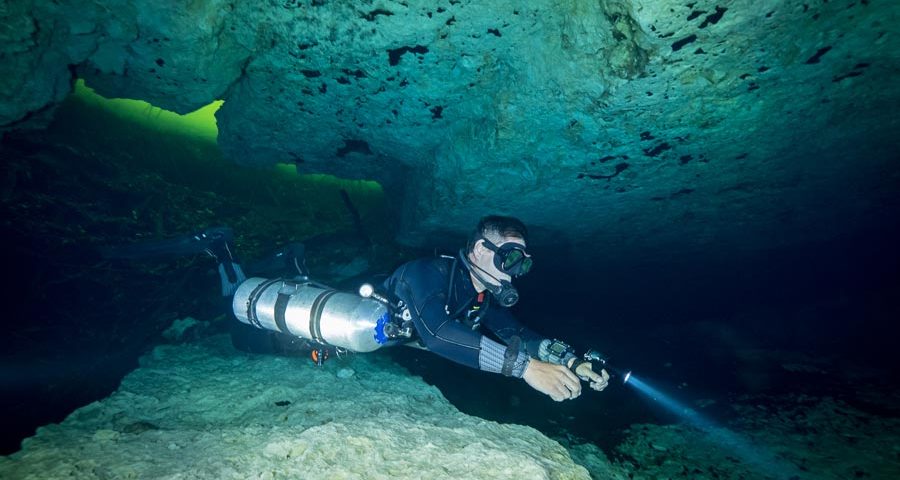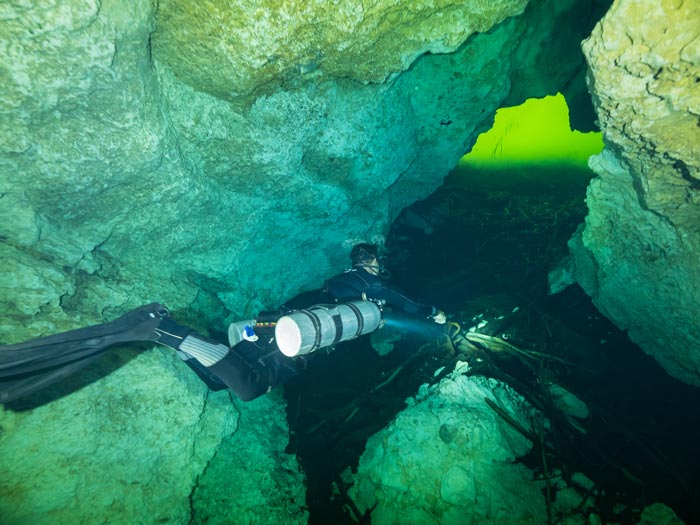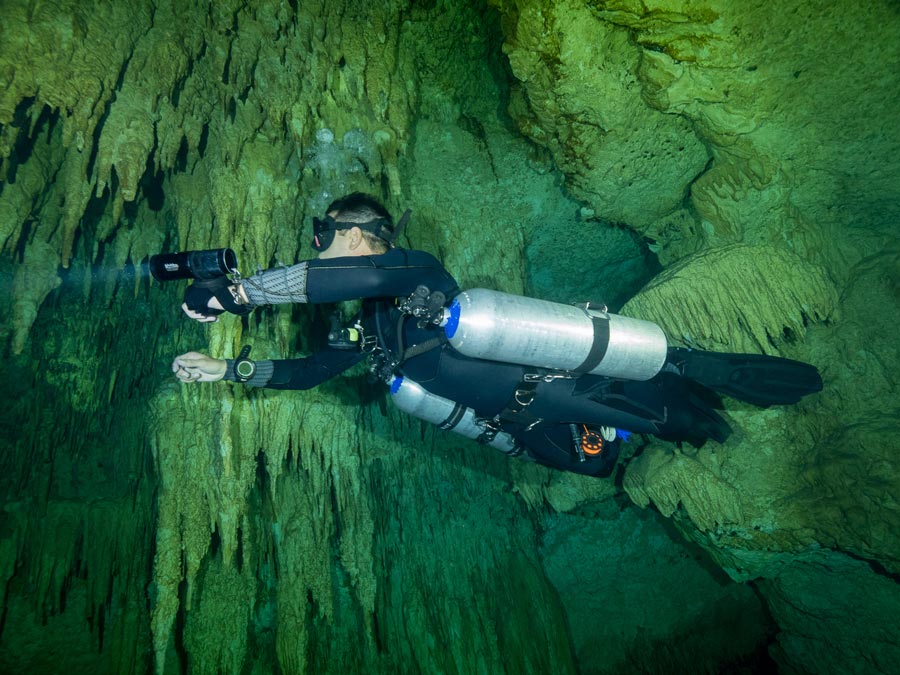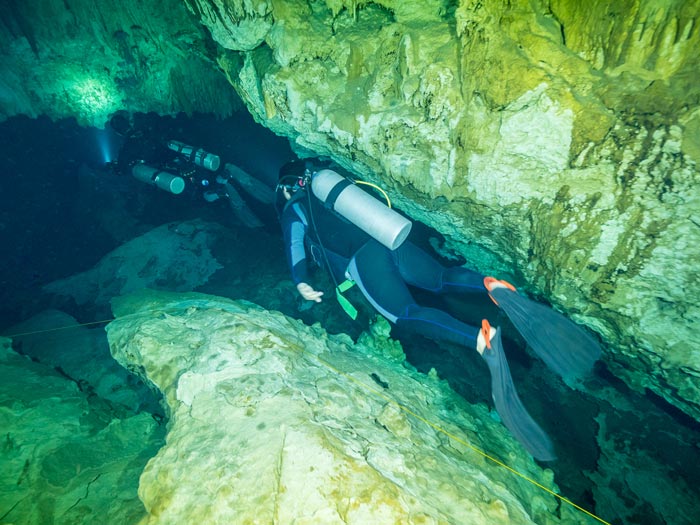Obtaining a cave diving certification is the door that many scuba divers open to take their first steps in technical diving. Therefore, getting your cave diving certification will require a greater effort on your part, specific and highly advanced skills, and training worthy of the best divers. The payoff will be just as grandiose.
In previous articles, we already saw the difference between cavern diving and cave diving. We recommend that you read the Everything You Need To Know About Cave Diving In Mexico, to understand the qualitative leap meant by your cave diving certification.
In today’s article, we consider the following points: who can opt for a cave diving certification, what you will learn in the course, and what equipment you will need to practice it safely. To answer these questions, we talked to Victor Cordoba, our Human Resources Director, who is also Course Director and Technical & Full Cave Instructor, among many other titles. As if this were not enough, he is a professional with more than 3000 cave dives in his logbook.








